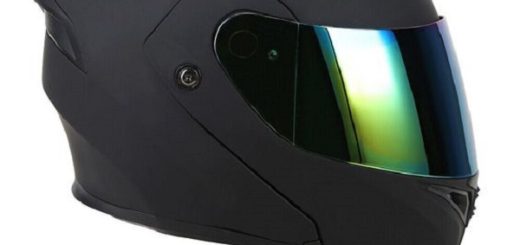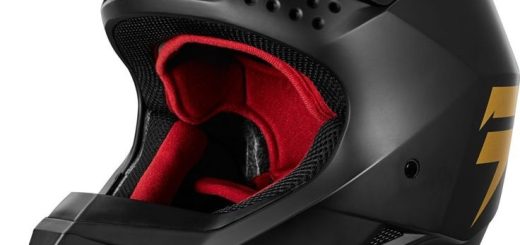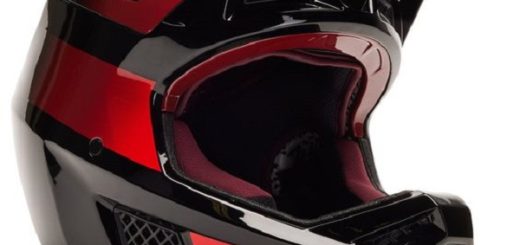Finding the Perfect Fit: How Should a New Motorcycle Helmet Fit?
Cruising down the open road on a motorcycle is a thrilling experience, but safety should always be your top priority. A properly fitted helmet is essential for protecting your head in the event of an accident. But how do you know how a new motorcycle helmet should fit?
This guide will delve into the key factors to consider when ensuring a snug, comfortable, and most importantly, safe helmet fit. We’ll cover everything from measuring your head to assessing the fit in-store and the crucial safety features to look for.
Taking the First Step: Measuring Your Head
Before diving into the world of motorcycle helmets, it’s vital to measure your head to get a starting point for sizing. Here’s what you’ll need:
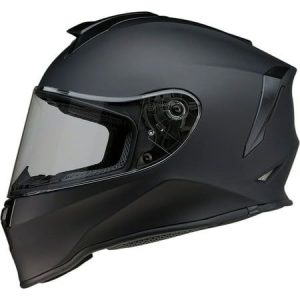
- Soft measuring tape: A cloth measuring tape is ideal as it conforms easily to the curves of your head. If you don’t have one, a string or shoelace can work in a pinch, but be sure to mark the length on a ruler for accurate measurement later.
Here’s a step-by-step guide to measuring your head:
- Grab a friend (optional): Having a friend help you with the measurement can ensure accuracy. However, if you’re on your own, you can still get a good measurement by following these steps.
- Locate the widest part of your head: This is typically just above your eyebrows and around the fullest part of your head, which may be above your temples or at the back of your head.
- Wrap the measuring tape horizontally: Position the tape level around your head, keeping it comfortably snug but not too tight. The tape should go just above your eyebrows and ears, encircling your entire head.
- Read the measurement: Once the tape completes a full circle around your head, note the measurement at the point where the tape meets. If you’re using a string or shoelace, mark the spot on the string and then measure that distance on a ruler.
- Take multiple measurements: For accuracy, take the measurement two or three times. If the measurements differ slightly, take the average of the readings.
Understanding New Motorcycle Helmet Sizing Charts
With your head measurement in hand, it’s time to consult a helmet sizing chart. Remember, sizing can vary slightly between brands, so it’s important to use the chart specific to the helmet you’re considering. Most helmet manufacturer websites will have a sizing chart readily available.
Here’s how to navigate a sizing chart:
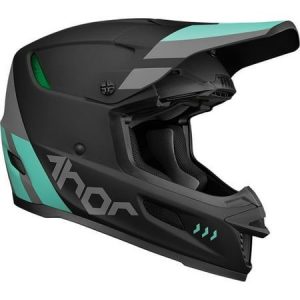
- Locate the head circumference range: Find the column on the chart that lists head circumference measurements.
- Match your measurement: See where your head measurement falls within the range on the chart.
- Corresponding helmet size: The corresponding helmet size will be listed in the adjacent column.
While sizing charts are a helpful starting point, there can be some variation. For instance, if your head measurement falls right on the cusp between two sizes, it’s always best to try on both sizes to see which feels more comfortable.
Beyond the Measurement: Assessing a Perfect Fit in-Store
While the head measurement is a crucial step, there’s more to achieving a perfect helmet fit. Here’s what to consider when trying on helmets in store:
- Snug but Comfortable: The helmet should feel snug and secure, but not so tight that it causes pressure points or headaches. You should be able to fit a finger or two comfortably between the helmet padding and your forehead.
- Cheek Pad Check: The cheek pads should feel snug but not constricting. If they feel too loose, your cheeks may move around excessively inside the helmet, which can be uncomfortable and create noise. Some helmets come with interchangeable cheek pads for a more customized fit.
- Eye Port Alignment: The eye port of the helmet should sit just above your eyebrows, allowing for good peripheral vision and unobstructed sightlines.
- Shake Test: Once you have the helmet on, gently shake your head from side to side. The helmet should move slightly with your head, but it shouldn’t wobble excessively.
The Importance of Consulting a Professional
If you’re unsure about the size or fit of a helmet, it’s always best to err on the side of caution and consult a professional. Many motorcycle gear stores have knowledgeable staff who can assist you in finding the perfect helmet fit. They can help you with the following:

- Sizing Expertise: Experienced staff can help you interpret sizing charts and recommend the appropriate size based on your head measurement and the specific helmet model.
- Trying on Multiple Helmets: They’ll encourage you to try on several helmets in different sizes and styles to find the best fit for your head shape.
- Safety Feature Knowledge: They can answer your questions about the helmet’s safety features and ensure you choose a helmet that meets the necessary safety standards.
Safety First: Features to Look for in a New Motorcycle Helmet
While a comfortable fit is essential, safety should always be your top priority. Here are some key safety features to consider when choosing a motorcycle helmet:
- DOT Certification: Ensure the helmet meets the Department of Transportation (DOT) safety standards. This is the minimum safety requirement for motorcycle helmets in the United States.
- ECE Certification: Consider helmets that meet the ECE (Economic Commission for Europe) standards, which are often considered more stringent than DOT standards.
- Shell Material: Helmets are typically made of polycarbonate or a composite material. Polycarbonate is a lightweight and affordable option, while composite materials offer increased strength and impact resistance.
- Visor Options: Choose a helmet with a visor that offers good scratch resistance and UV protection. Some visors are also anti-fog treated for added clarity in humid conditions.
- Ventilation: Proper ventilation is crucial for comfort, especially in hot weather. Look for helmets with vents on the top, chin, and back to allow for airflow.
- Retention System: Ensure the helmet’s retention system, such as a D-ring closure, is easy to operate and comfortable to wear. A secure retention system is vital to keeping the helmet on your head in the event of an accident.
Investing in Your Safety: Why a Quality New Motorcycle Helmet Matters
A motorcycle helmet is a vital piece of safety equipment. It’s an investment in your well-being, and spending a little more on a high-quality helmet that fits well and offers the safety features you need is always worthwhile.
Here are some additional benefits of a quality helmet:
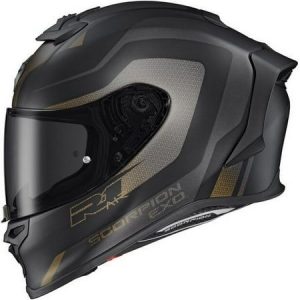
- Enhanced Comfort: A well-fitting helmet with good ventilation will be more comfortable to wear on long rides.
- Reduced Noise: Quality helmets can help to reduce wind noise and engine noise, making for a more pleasant riding experience.
- Improved Focus: By minimizing noise and distractions, a good helmet can help you stay focused on the road, enhancing your reaction time and overall safety.
The Right Fit for the Right Ride: Don’t Settle!
Finding the perfect motorcycle helmet is an important decision. Take your time, do your research, and try on several helmets before making a purchase. Here are some additional tips for finding the right helmet:
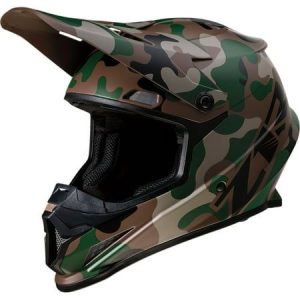
- Consider Your Riding Style: If you’re a sportbike rider, you’ll likely want a full-face helmet for maximum protection. Cruiser riders may prefer a ¾ helmet or half-helmet for a more open feel, but these styles offer less protection.
- Match the Helmet to Your Head Shape: Helmets come in various shapes to accommodate different head shapes. An oval-shaped helmet may not fit comfortably on a round head, and vice versa. Trying on helmets is essential to ensure a good fit.
- Don’t Rush the Process: Finding the perfect helmet fit can take time. Don’t feel pressured to purchase the first helmet you try on.
Invest in your safety today and hit the road with confidence! Remember, a properly fitted helmet is your best defense in the event of an accident. Don’t settle for anything less than the perfect fit and optimal protection.
